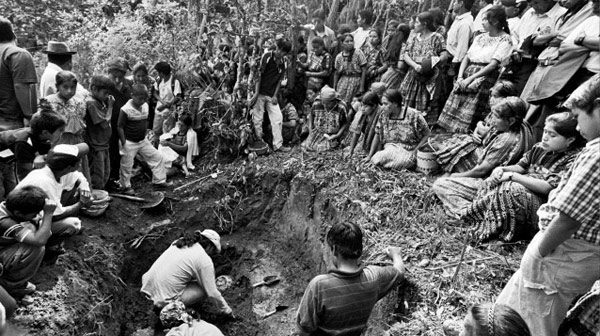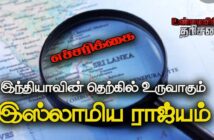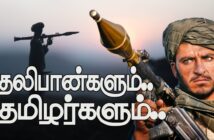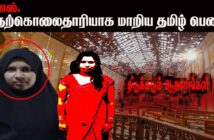The 34 year old armed conflict in Guatemala ended with the Accord of Oslo on the 23rd of June 1994. The accord stipulated a fact finding body – the Commission for Historical Clarification or CEH – to probe the events during the armed conflict. The recently published CEH report found the Guatemalan state (as in the case of Sri Lanka) to be primarily responsible for the bulk of the human rights violations. Ninety three percent of the violations were committed by state agencies (the army and paramilitary forces), and the rebels were responsible for 3 percent of the violations. In fact, in most areas of inquiry, the CEH findings have an uncanny resemblance to what goes on in Sri Lanka today.
The following are excerpts from a summary of the Commission’s Report.
The Commission for Historical Clarification (CEH)
Conclusions
- The tragedy of the armed confrontation The Commission for Historical Clarification (CEH) registered a total of 42,275 victims, including men, women and children. Of these, 23,671 were victims of arbitrary execution and 6,159 were victims of forced disappearance. Eighty-three percent of fully identified victims were Mayan and seventeen percent were Ladino..
Historical roots of the armed confrontation
- ….the violence was fundamentally directed by the State…
Repression as a substitute for the law
- The incapacity of the State to provide answers to legitimate social demands and claims, led to the creation of an intricate repressive apparatus which replaced the judicial action of the courts… An illegal and underground punitive system was established, managed and directed by military intelligence. The system was used as the State’s main form of social control…
The ineffectiveness of the judicial system
- The country’s judicial system, due either to induced or deliberate ineffectiveness, failed to guarantee the application of the law, tolerating, and even facilitating, violence…
The cold war, the National Security Doctrine and the role of the United States
- The movement of Guatemala towards polarisation, militarization and civil war was not just the result of national history… Whilst anti-communism, promoted by the United States within the framework of its foreign policy, received firm support from right-wing political parties and from various other powerful actors in Guatemala, the United States demonstrated that it was willing to provide support… Military assistance was directed towards reinforcing the national intelligence apparatus and for training the officer corps in counterinsurgency techniques, key factors which had significant bearing on human rights violations…
The internal enemy
- [The] state forces and related paramilitary groups were responsible for 93% of the violations documented by the CEH, including 92% of the arbitrary executions and 91% of forced disappearances…
Enemies of the insurgents
- Along with a clear definition of the Army as its enemy, insurgent groups also included some civilians in this category… insurgent actions produced 3% of the human rights violations and acts of violence perpetrated against men, women and children, including 5% of the arbitrary executions and 2% of forced disappearances.
More than just two parties
- Although the most visible actors in the armed confrontation were the Army and the insurgents, the CEH investigation has made evident the involvement of the entire State, through the unification of its various coercive institutions and mechanisms. Likewise, although of a different nature, the responsibility and participation of economically powerful groups, political parties, universities and churches, as well as other sectors of civil society, has been demonstrated.
A disproportionately repressive response
- The magnitude of the State’s repressive response, [was]totally disproportionate to the military force of the insurgency… at no time during the internal armed confrontation did the guerrilla groups have the military potential necessary to pose an imminent threat to the State. The number of insurgent combatants was too small to be able to compete in the military arena with the Guatemalan Army, which had more troops and superior weaponry, as well as better training and co-ordination…
- … the State deliberately magnified the military threat of the insurgency, a practise justified by the concept of the internal enemy…
The Mayan population as the collective enemy of the State
- In the years when the confrontation deepened (1978-1983), as the guerrilla support base and area of action expanded, Mayans as a group in several different parts of the country were identified by the Army as guerrilla allies… [There] was massive and indiscriminate aggression directed against communities independent of their actual involvement…
Racism as a component of violence
- … CEH also concludes that the undeniable existence of racism expressed repeatedly by the State as a doctrine of superiority…
Militarization
- … the militarization of the State and society was a strategic objective which was defined, planned and executed institutionally by the Guatemalan Army…
The Army subsequently assumed almost absolute power… by penetrating all of the country’s institutions, as well as its political, social and ideological spheres; in the final stage of the confrontation, it developed a parallel, semi-visible, low profile, but high impact, control of national life…
- Militarization was one of the factors that provided the incentive for and fed the armed confrontation as it profoundly limited the possibilities for exercising rights as citizens. Subsequently, it became one of the most damaging consequences of the confrontation…
Military intelligence
- … [the]intelligence system became the driving force of a state policy that took advantage of the situation resulting from the armed confrontation, to control the population, the society, the State and the Army itself…
- …clandestine activity was evident in the use of illegal detention centres or “clandestine prisons”, which existed in nearly all Guatemalan Army facilities… victims were not only deprived of their liberty arbitrarily, but they were almost always subjected to interrogation, accompanied by torture and cruel, inhuman or degrading treatment. In the majority of cases, the detainees were disappeared or executed.
The Kaibiles
- The substantiation of the degrading contents of the training of the Army’s special counter insurgency force, known as Kaibiles… This training included killing animals and then eating them raw and drinking their blood in order to demonstrate courage…
- A high proportion of the human rights violations… committed by the Army or security forces were perpetrated publicly and with extreme brutality, especially in the Mayan communities of the country’s interior… to produce and maintain a climate of terror in the population.
- The terror created was not just a result of the acts of violence or the military operations; it was also generated and sustained by other related mechanisms, such as impunity for the perpetrators, extensive campaigns to criminalise the victims…
Criminalisation of victims
- The State also tried to stigmatise and blame the victims and the country’s social organisations, making them into criminals in the public eye and thus into “legitimate” targets for repression…
Forced complicity in the violence
- The CEH counts among the most damaging effects of the confrontation those that resulted from forcing large sectors of the population to be accomplices in the violence, especially through their participation in the Civil Patrols (PAC), the paramilitary structures created by the Army… A large proportion of the male population over the age of fifteen, especially in the Mayan communities, was forced to participate in the PAC. This deeply affected values and behavioural patterns, as violence became a normal method of confronting conflictive situations…
- …this process created a sector of civilians who subsequently, as a result of their convictions, committed atrocities against their own neighbours… An uncontrolled armed power was created…
Impunity
- The justice system, nonexistent in large areas of the country before the armed confrontation, was further weakened when the judicial branch submitted to the requirements of the dominant national security model… by tolerating or participating directly in impunity… the judiciary became functionally inoperative… This allowed impunity to become one of the most important mechanisms for generating and maintaining a climate of terror.
Curtailed freedom of speech
- Although there were people who spoke out despite the risks, the large news agencies, in general, supported the authoritarian regimes through self-censorship and distortion of the facts. The price was very high, not only in the number of lives lost, but also because Guatemala became a country silenced…
Massive forced displacement
- Unprecedented terror, provoked by the massacres and the devastation of complete villages during the period 1981 to 1983, led to the flight en masse of a diverse population, the majority of which was Mayan… Families and communities were fractured and cohesive cultural ties weakened.
- …those who fled were forced to move constantly while they remained in the country, mainly to evade military operations directed against them despite their being defenceless, and partly to search for food, water and shelter.
Militarised resettlement and the stigma of the displaced
- From 1983 onwards, Army strategy towards the displaced population was designed to bring it under military control: amnesties were offered and those who accepted were resettled in highly militarised communities.
Conclusions
- Human rights violations, acts of violence and assignment of responsibility
Human rights violations committed by the State
- Those acts which are directly attributable to the State include those perpetrated by its public servants and state agencies. Additionally, the State holds direct responsibility for the actions of civilians to whom it delegated, de jure or de facto…
- The State must also respond for breaches in the legal obligation to investigate, try and punish human right violations…
- Human rights violations and acts of violence attributable to actions by the State represent 93% of those registered… Eighty-five percent of all cases of human rights violations and acts of violence registered by the CEH are attributable to the Army, acting either alone or in collaboration with another force, and 18%, to the Civil Patrols, which were organised by the armed forces.
Massacres and the devastation of the Mayan people
- The Army’s perception of Mayan communities as natural allies of the guerrillas contributed to increasing and aggravating the human rights violations perpetrated against them, demonstrating an aggressive racist component of extreme cruelty…
- These massacres and the so-called scorched earth operations, as planned by the State, resulted in the complete extermination of many Mayan communities, along with their homes, cattle, crops and other elements essential to survival. The CEH registered 626 massacres attributable to these forces.
- The CEH has noted particularly serious cruelty in many acts committed by agents of the State, especially members of the Army, in their operations against Mayan communities. The counterinsurgency strategy not only led to violations of basic human rights, but also to the fact that these crimes were committed with particular cruelty, with massacres representing their archetypal form…
Disappearances
- …forced disappearance was a systematic practise which in nearly all cases was the result of intelligence operations…
Arbitrary executions
- The Guatemalan State repeatedly and systematically violated the right to life, through what this Report has called arbitrary executions…
The rape of women
- The rape of women, during torture or before being murdered, was a common practice aimed at destroying one of the most intimate and vulnerable aspects of the individual’s dignity… The presence of sexual violence in the social memory of the communities has become a source of collective shame.
The death squads
- “Death squads” were also used; these were initially criminal groups made up of private individuals who enjoyed the tolerance and complicity of state authorities.
The denial of justice
- Acts and omissions by the judicial branch, such as the systematic denial of habeas corpus, continuous interpretation of the law favourable to the authorities, indifference to the torture of detainees and limitations on the right to defence demonstrated the judges’ lack of independence. These constituted grave violations of the right to due process…The few judges that kept their independence and did not relinquish the exercise of their tutelary functions, were victims of repressive acts…
The legal order affected
- Guatemalan State agents, the majority of whom were members of the Army, flagrantly committed acts prohibited by Common Article III of the 1949 Geneva Conventions… Therefore, the State of Guatemala, which was legally obliged to comply with these precepts and prohibitions throughout the confrontation, is responsible…
Institutional responsibility
- The majority of human rights violations occurred with the knowledge or by order of the highest authorities of the State…
- The responsibility for a large part of these violations, with respect to the chain of military command as well as the political and administrative responsibility, reaches the highest levels of the Army and successive governments.
- The excuse that lower ranking Army commanders were acting with a wide margin of autonomy and decentralisation without orders from superiors, as a way of explaining that “excesses” and “errors” were committed, is an unsubstantiated argument…
Acts of genocide
- … the CEH concludes that many massacres and other human rights violations committed against these groups obeyed a higher, strategically planned policy, manifested in actions which had a logical and coherent sequence.
- Faced with several options to combat the insurgency, the State chose the one that caused the greatest loss of human life among non-combatant civilians…
- In consequence, the CEH concludes that agents of the State of Guatemala… committed acts of genocide against groups of Mayan people…
Acts of violence committed by the guerrillas
- Acts of violence attributable to the guerrillas represent 3% of the violations registered by the CEH. This contrasts with 93% committed by agents of the State, especially the Army…. This quantitative difference provides new evidence of the magnitude of the State’s repressive response… Read the full summary at
http://hrdata.aaas.org/ceh/report/english/toc.html




